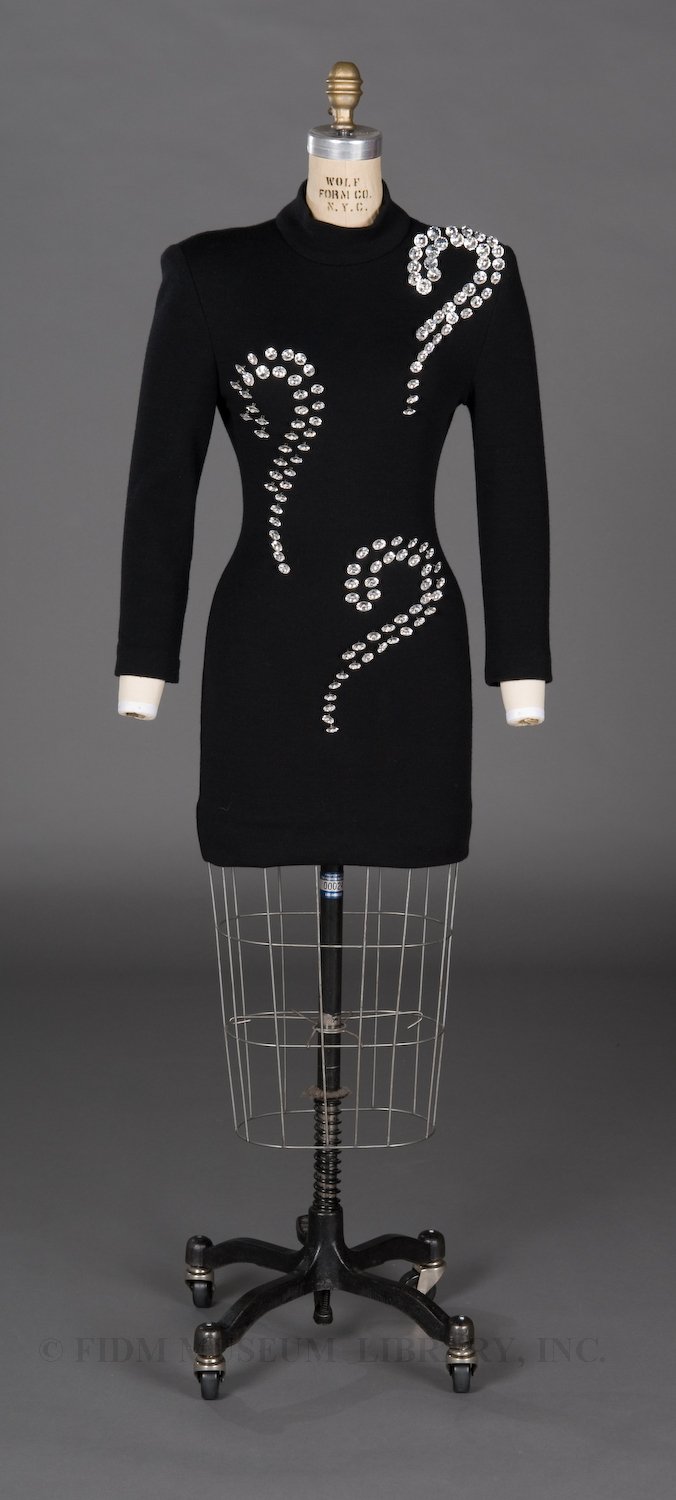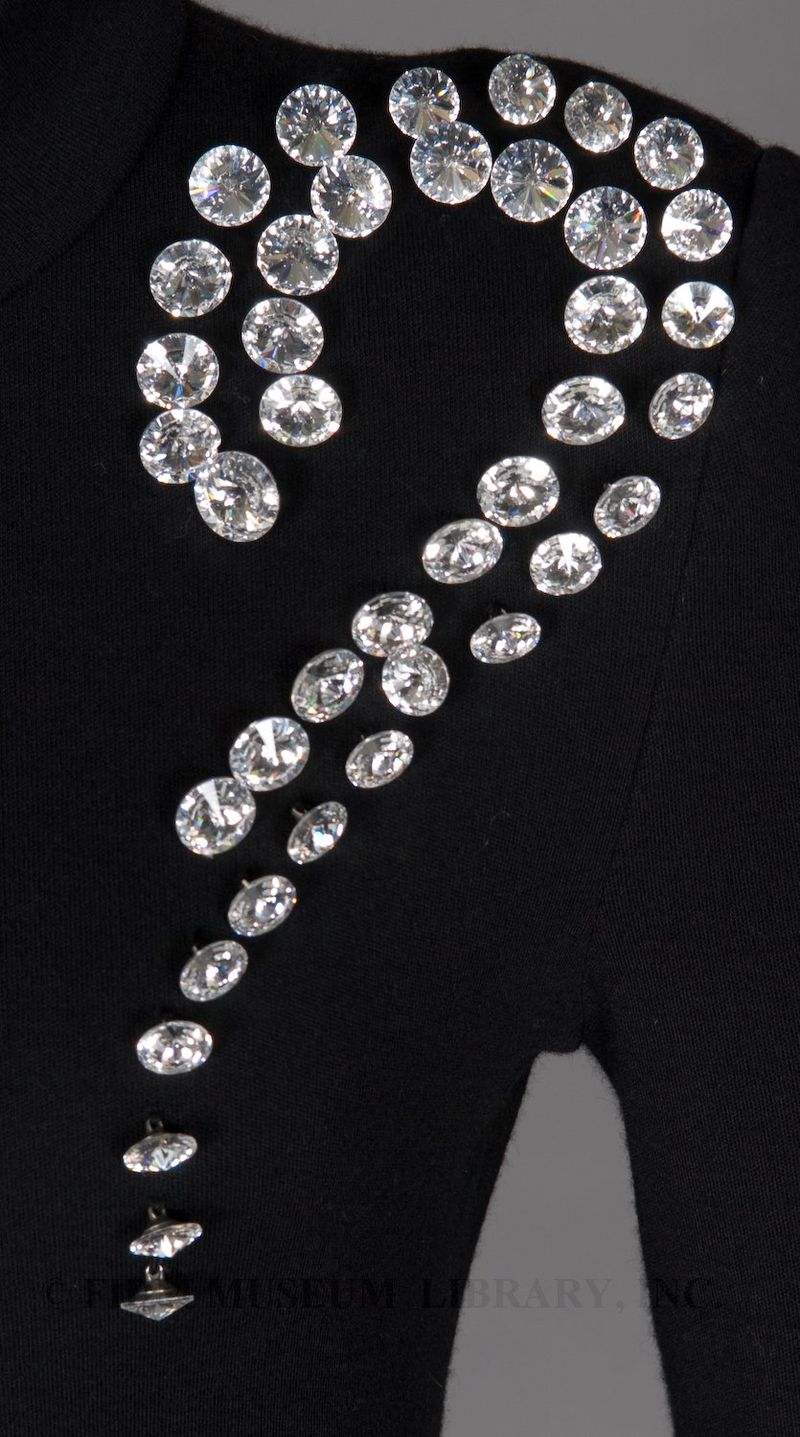Patrick Kelly
Patrick Kelly's (1954-1990) irreverent mini-dresses embellished with buttons, bows or rhinestones were his most iconic creations. One 1988 version featured tiny billiard balls sewn to the bodice! When interviewed, Kelly always credited his grandmother with the inspiration for using everyday objects as embellishment. As a child in Mississippi, Kelly frequently lost his shirt buttons. His grandmother would replace them, but the buttons never matched. When Kelly complained, his grandmother "started putting different buttons everywhere" to distract from the mismatched buttons. 1
 Wool minidress Patrick Kelly c. 1986 Museum Purchase 2007.5.14
Wool minidress Patrick Kelly c. 1986 Museum Purchase 2007.5.14
Kelly's choice of colorful, eye-catching embellishments were part of creative philosophy that emphasized a playful approach to fashion. Despite (or because of?) their theatrical embellishments, Kelly's designs were popular with fashion commentators, models (who were reportedly willing to accept clothing in lieu of other payment for walking in Kelly's shows) and customers. According to a Macy's buyer interviewed in 1989, Kelly's "clothes fly out of the store." 2 Even Bette Davis appreciated Kelly's aesthetic, wearing a Kelly button dress for a 1987 appearance on David Letterman. In 1988, Kelly became the first American designer to be admitted to the Chambre Syndicale du Prêt-à-Porter des Couturiers et des Créateurs de Mode, the prestigious French organization which governs the French fashion industry.
 2007.5.14 Embellishment detail
2007.5.14 Embellishment detail
Like many other creative African-Americans, including Josephine Baker, Kelly achieved success only after moving to Paris. Once Kelly had been legitimized by the Paris fashion establishment, his work gained a wide following in the United States. Despite this relocation, Kelly frequently acknowledged his heritage, often repeating a version of the statement, "I design differently because I am Patrick Kelly, and Patrick Kelly is black, is from Mississippi" in interviews. His personal uniform of oversize overalls spoofed the stereotypical uniform of a Southern farmhand, while his choice of decorative motifs often included racially loaded imagery such as watermelon wedges, patterned bandanas and the golliwog icon. At public appearances and fashion shows, Kelly often gifted small pins featuring an African American baby, an icon he also used as a decorative motif on garments. For more images of Patrick Kelly garments, visit the Brooklyn Museum's archive for their 2004 exhibition Patrick Kelly: A Retrospective.
1 Hyde, Nina. "From Pauper to the Prints of Paris." The Washington Post 9 Nov. 1986: G1. 2 Hyde, Nina. "Fashion." The Washington Post 17 Mar 1989: D1.